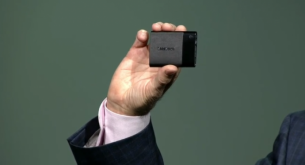Most of us don’t realize that social media websites such as Facebook are collecting large amounts of data. Have you ever seen a post on your wall posted in another language and then a little box down below that says, “Rate This Translation?” Whether you rate it as good or bad, Facebook is slowly gathering information on the right way to interpret foreign sentences and then resells it.
Every thing you do is a piece of information, regarding what products you look out, how long you’re on Facebook, and what type of games or apps that you use on social media websites. Unfortunately, we don’t get paid for your data, yet these sites are making huge profits on it.
A new social media platform called Rabadaba believes that since we are giving social media sites such large amounts of information, they should pay us for it. Earn cash by being social and doing the things that you already do on a daily basis.
What Is Rabadaba?
As mentioned above, Rabadaba is a social media platform that pays you to be social. Their goal is to make social media actually worth your time. The one downside that many users may not enjoy is that there’s currently only a mobile interface for both iOS and Android devices, yet they’re currently working on building a web platform.
Just like other sites, you can upload photos, videos, audio, and submit text posts (all of these are called dabs) to all of your friends. It’s more or less similar to Facebook expect with a different layout and a few differences in functionality.
Cash is earned in the form of what’s called “Rabadaba Dough.” This can be earned by voting, ReDabbing, Posting Dabs, and by flagging content that’s deemed as inappropriate. The amount you earn depends on the task at hand and also how many others interact with your posts.
If someone really enjoys one of your posts, they can also leave you tips directly from their Rabadaba balance. There’s also the option of giving back by donating your Rabadaba Dough to charities and crowdfunding. Otherwise, payments are made automatically to your PayPal account each month on the 15th.
How Do I Get Started Earning With Rabadaba?
Getting started earning cash with Rabadaba is very simple and can be done in just 3 simple steps.
1. Download. You can download the Rabadaba app for free on either your iOS or Android device.
2. Register. All you need to register is your email and to create a username and password.
3. Begin posting. Start earning cash by posting and uploading new content. Make it valuable enough so that others are willing to upvote. Become an active member by commenting on others’ posts so that you’re more likely to get more views on your page and thus higher amounts of cash in your account.
How Much Can I Expect To Make On Rabadaba?
The amount you can earn on Rabadaba isn’t that much unless you’re actively participating on their platform. One Rabadaba point is equal to $.0001 cents, that’s one ten-thousandth of a cent! This may seem like nothing, but you’d be surprised at how quickly you can rack up points.
The points of Rabadaba is to create quick and fast interactions between members. This is why as soon as you sign-up, you should already be upvoting others’ posts along with posting fresh, viral content. Quickly add friends and start following others.
Let’s say you have 2,000 friends. Upload some a funny video and get 500 people to like it and you’re already looking at 500 Rabadaba points. Do this a couple of times a day and you can easily earn an extra $10 – $20 a month.
Create really good content and earn extra by getting other users to tip on your posts. Rabadaba wants you to create quality of quantity, as they want your data to be valuable and worthwhile.
Final Thoughts
It really works guys, I am personally using this from last month and I have to say that this is the one of the Social Media app that you Should Join fast if thinking to Come so Come fast my user ID @bittugamer1997
You can see some Proof Down there👇👇👇👇👇










